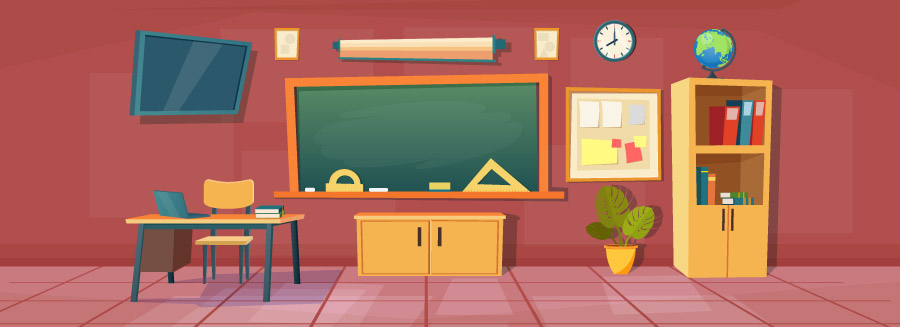It was workshop week at the high school where I teach sophomore English and a ninth-grade literacy course. I was just beginning a year where I taught part-time and consulted on adolescent literacy with area districts the other part of my day. I should have anticipated that workshop week would be hectic. I would be busy getting my own classroom and lessons set up but would also be prepping and facilitating back-to-school literacy workshop sessions with the districts with whom I was contracted. I recall being really stressed that year because I had packed up my classroom library the spring prior and moved everything out so the carpeting could be replaced. Now it’s Friday, my room was not unpacked, I was exhausted from the week, and students would show up Tuesday. My plan was to come in on Labor Day and feverishly get my room decorated and set up for students on Tuesday. I mean, they couldn’t come into a room filled with boxes and blank walls. Or could they?

Labor Day weekend that year was glorious. Sun shining, gentle breeze flowing, and I happened to be at my parents’ lake home. I did not come into school that Labor Day. Instead, our first-day activity in each class was to unbox some classroom library books, decide how we wanted to sort and display them, choose wall décor, and arrange the desks and reading nooks. I learned a lot during this happy accident. I learned that students want:
1 Autonomy
As students sorted books into categories to display on our bookshelves and baskets, I heard them say things like, “Let’s put the cool covers over here,” or “I hope she has some true crime books, I want to make that basket.” It was fun to hear them talk about how they wanted to be able to find books easily based on the topic. Not one suggested we organize the books alphabetically by author. At first, I was concerned thinking even Barnes and Noble organizes sections (not on display) in this way. But I also thought teaching students the value of organizing alphabetically could be a powerful early year mini lesson. Over time we ended up with a genrefied classroom library with theme displays and topic-specific baskets. I thought it would be hard to find books in the room when I needed to, but it really wasn’t. If I ever had trouble, students were quick to help, or they knew right where the book was. More than anything, students having autonomy over how we set up our classroom was most important.

2 Collaboration
Students were really surprised when I pulled them together to talk about how we wanted our desks. I gave a little context by letting students know that since we are sharing our space with other classes during other hours of the day, we would need options for whole group discussion, independent practice, and small group work. They also noticed a couple of rugs and several large pillows (purchased for the reading nooks I had created in previous years). Students were quick to offer an arrangement of furniture that allowed for flexibility and a range of types of workspaces—from independent to collaborative. I gathered all arrangement ideas from each class and narrowed them down to a top three that I could live with, and students voted. More than anything, students wanted to be sure they would have an opportunity to be social (both about academics and personal topics), so everyone suggested triads or quads of desks. If you have any say in new furniture being purchased in your building, I highly recommend desks on wheels (with brakes) for ease of room change.

3 Ownership
As we worked to decorate the room, I had a pile of posters for students to choose from and hang where they’d like in the room. I thought I was offering choice and autonomy which would be motivating for students. I was not prepared to overhear students say things like, “These are cheesy,” “This poster is stupid.” At first, I was stung. I liked my inspirational posters. My favorite said, “I can’t do that—ends a story. I can’t do that YET means anything is possible.” After I reflected and asked more questions about what students wanted on the walls, I learned that it wasn’t so much the sayings they were opposed to, it was the mass-produced inspiration. I asked them what we should put on our walls instead, and they opted to find their own inspirational quotes and to illustrate them in their own way. Some did this with digital programs, others with watercolor, and some with crayons. It wasn’t the way I had decorated my classroom in the past, but it looked pretty great. I knew students felt ownership in the way they took care of the classroom throughout the year. I used to find gum wrappers in my book baskets, or magazines strewn across the reading rug, but in this happy accident year students were taking care of OUR space.
Students need ownership not only of our classroom environment, but also of what they read when in our space. For more on that, see my previous blog article, Just Let Them Read.






